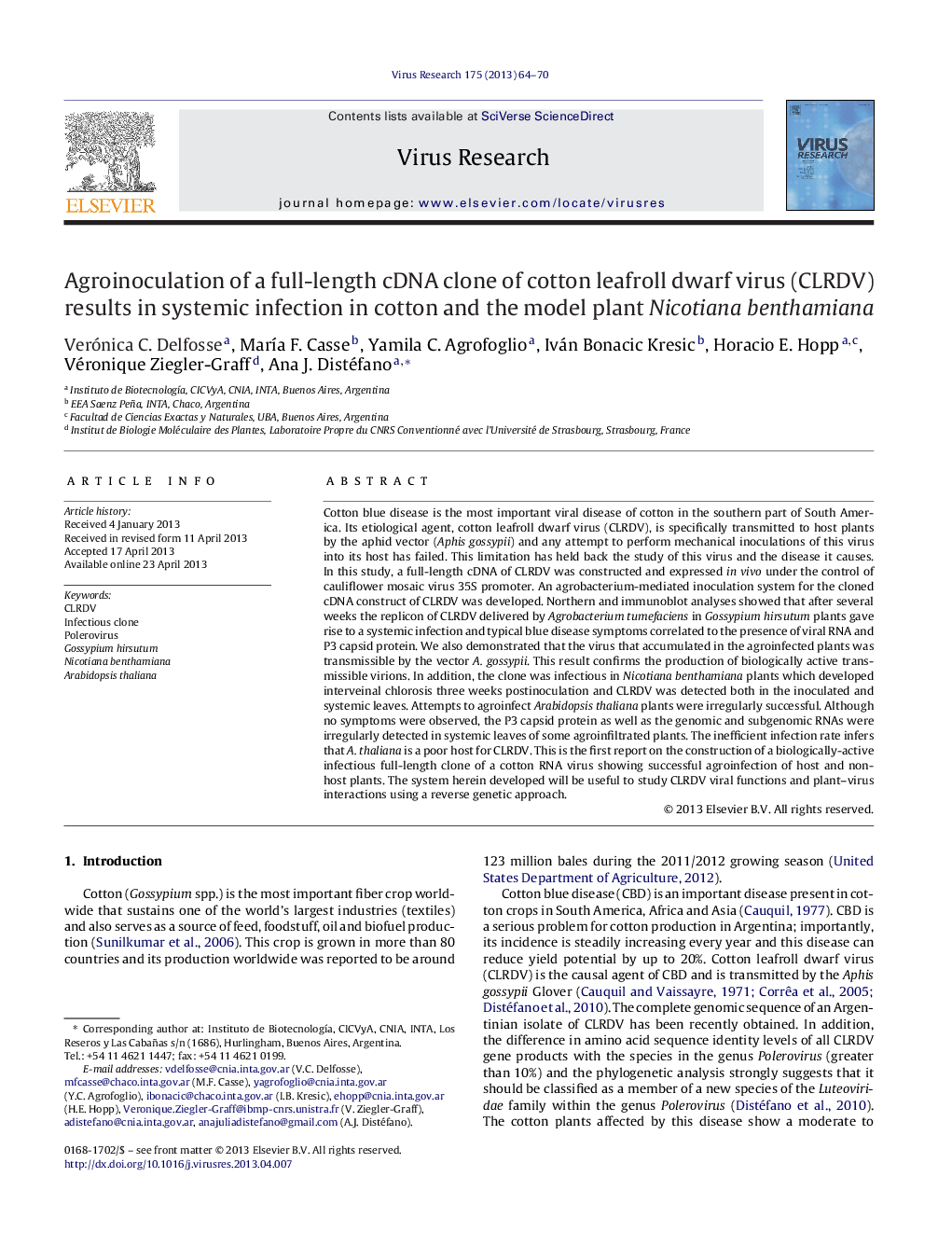| Article ID | Journal | Published Year | Pages | File Type |
|---|---|---|---|---|
| 3428622 | Virus Research | 2013 | 7 Pages |
•A full-length infectious cDNA clone of cotton leafroll dwarf virus was constructed.•CLRDV-infectious clone was used for agroinfiltration.•The replicon produced systemic infection and typical symptoms in cotton.•Infectivity was also tested on Nicotiana benthamiana and Arabidopsis thaliana.•Biologically active aphid-transmissible virions were produced.
Cotton blue disease is the most important viral disease of cotton in the southern part of South America. Its etiological agent, cotton leafroll dwarf virus (CLRDV), is specifically transmitted to host plants by the aphid vector (Aphis gossypii) and any attempt to perform mechanical inoculations of this virus into its host has failed. This limitation has held back the study of this virus and the disease it causes. In this study, a full-length cDNA of CLRDV was constructed and expressed in vivo under the control of cauliflower mosaic virus 35S promoter. An agrobacterium-mediated inoculation system for the cloned cDNA construct of CLRDV was developed. Northern and immunoblot analyses showed that after several weeks the replicon of CLRDV delivered by Agrobacterium tumefaciens in Gossypium hirsutum plants gave rise to a systemic infection and typical blue disease symptoms correlated to the presence of viral RNA and P3 capsid protein. We also demonstrated that the virus that accumulated in the agroinfected plants was transmissible by the vector A. gossypii. This result confirms the production of biologically active transmissible virions. In addition, the clone was infectious in Nicotiana benthamiana plants which developed interveinal chlorosis three weeks postinoculation and CLRDV was detected both in the inoculated and systemic leaves. Attempts to agroinfect Arabidopsis thaliana plants were irregularly successful. Although no symptoms were observed, the P3 capsid protein as well as the genomic and subgenomic RNAs were irregularly detected in systemic leaves of some agroinfiltrated plants. The inefficient infection rate infers that A. thaliana is a poor host for CLRDV. This is the first report on the construction of a biologically-active infectious full-length clone of a cotton RNA virus showing successful agroinfection of host and non-host plants. The system herein developed will be useful to study CLRDV viral functions and plant–virus interactions using a reverse genetic approach.
